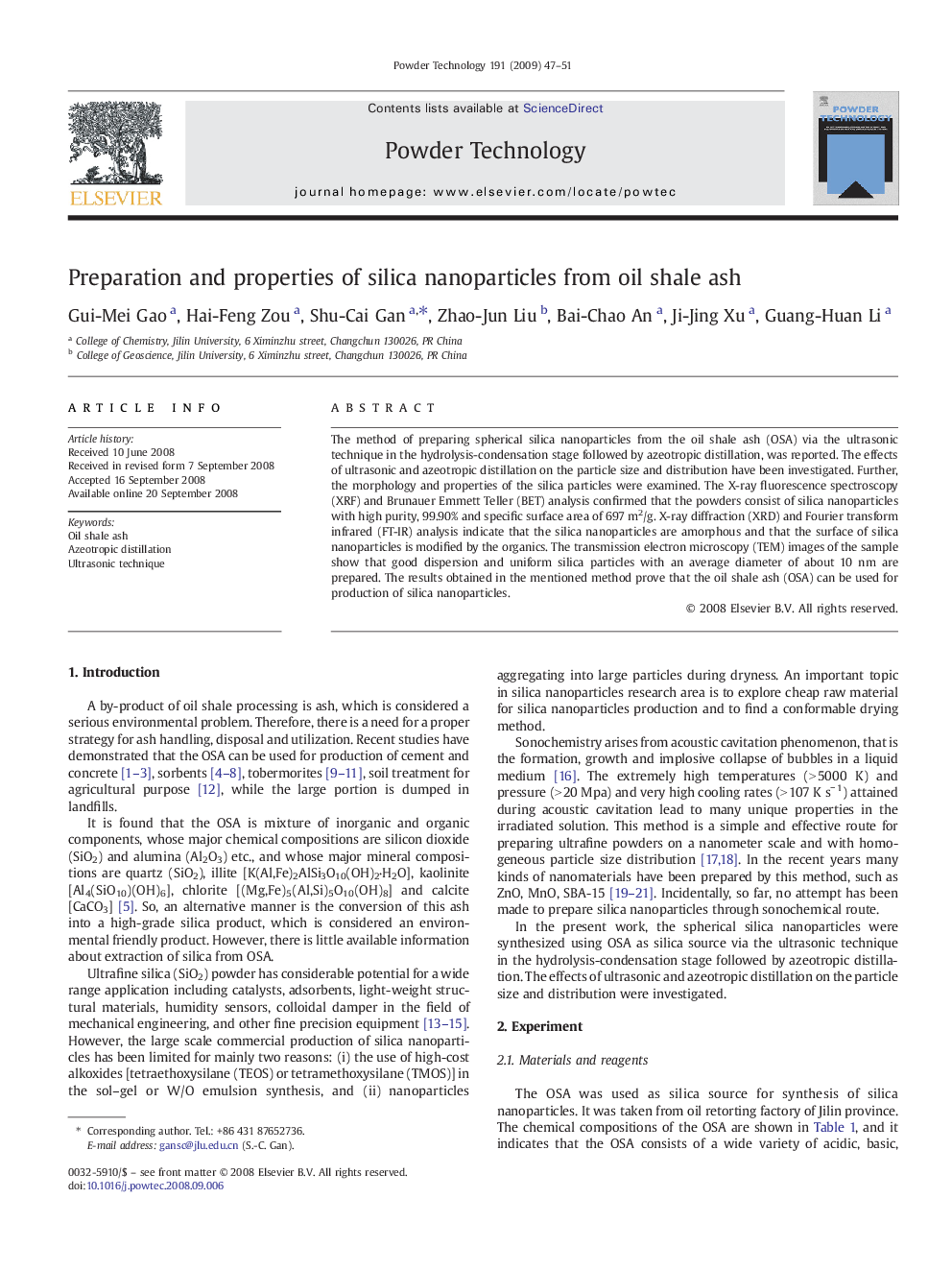| Article ID | Journal | Published Year | Pages | File Type |
|---|---|---|---|---|
| 238562 | Powder Technology | 2009 | 5 Pages |
The method of preparing spherical silica nanoparticles from the oil shale ash (OSA) via the ultrasonic technique in the hydrolysis-condensation stage followed by azeotropic distillation, was reported. The effects of ultrasonic and azeotropic distillation on the particle size and distribution have been investigated. Further, the morphology and properties of the silica particles were examined. The X-ray fluorescence spectroscopy (XRF) and Brunauer Emmett Teller (BET) analysis confirmed that the powders consist of silica nanoparticles with high purity, 99.90% and specific surface area of 697 m2/g. X-ray diffraction (XRD) and Fourier transform infrared (FT-IR) analysis indicate that the silica nanoparticles are amorphous and that the surface of silica nanoparticles is modified by the organics. The transmission electron microscopy (TEM) images of the sample show that good dispersion and uniform silica particles with an average diameter of about 10 nm are prepared. The results obtained in the mentioned method prove that the oil shale ash (OSA) can be used for production of silica nanoparticles.
Graphical abstractA new synthetic method of silica nanoparticles using the OSA as the silica source and the PEG as surfactant via the ultrasonic technique in the hydrolysis-condensation stage followed by azeotropic distillation was developed. This method is a simple and effective route for preparing ultrafine silica powders on a nanometer scale and with homogeneous particle size distribution. The specific surface area is as high as 697 m2/g. It leads to the low cost production of silica nanoparticles for practical applications. Furthermore, it provides a new way to solve the problem of OSA pollution.Figure optionsDownload full-size imageDownload as PowerPoint slide
